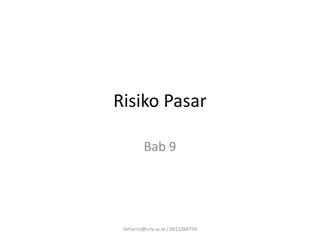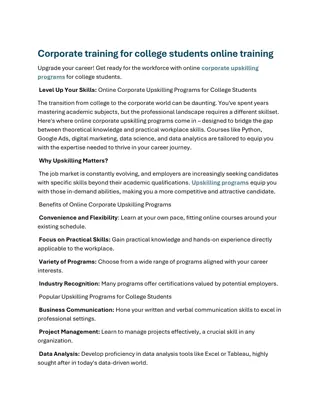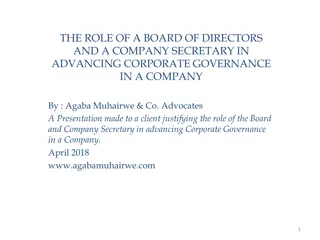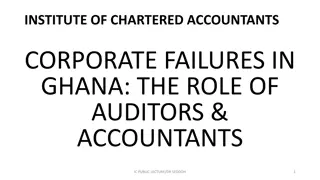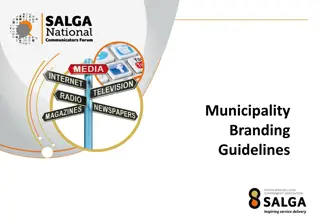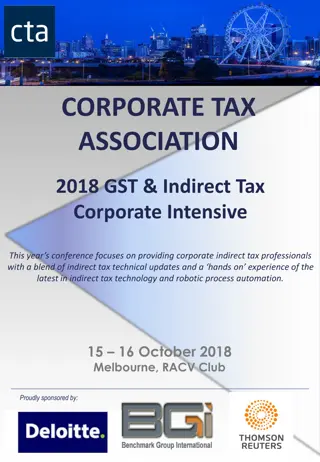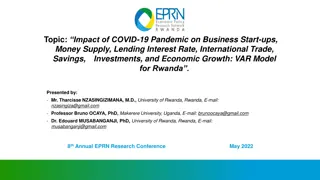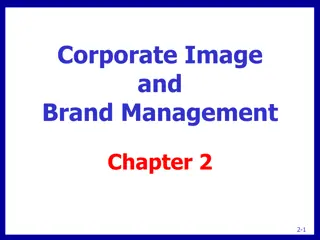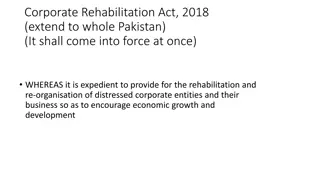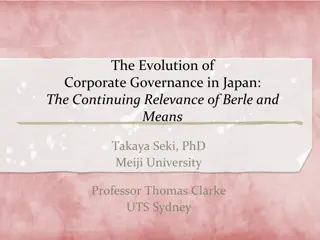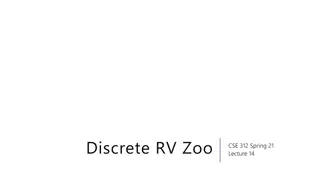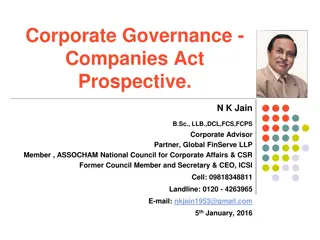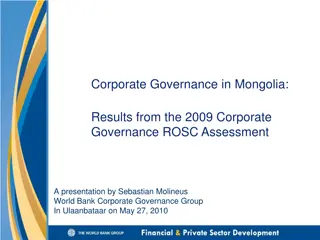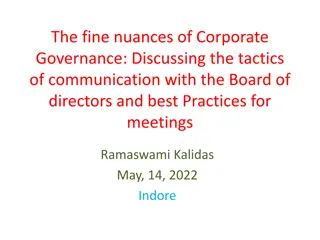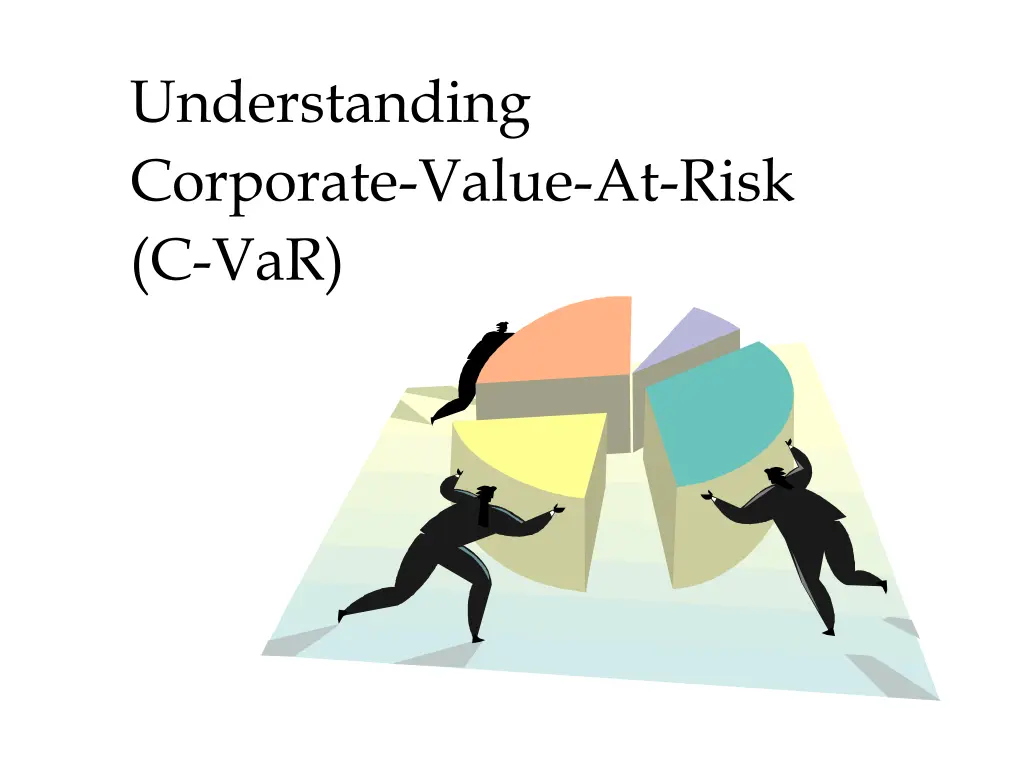
Understanding Corporate Value at Risk (C-VaR) Methodology
Explore the concept of Corporate Value at Risk (C-VaR) as a key methodology in corporate risk management. Learn about risk identification, measurement, and control through a series of steps outlined in the process.
Download Presentation

Please find below an Image/Link to download the presentation.
The content on the website is provided AS IS for your information and personal use only. It may not be sold, licensed, or shared on other websites without obtaining consent from the author. If you encounter any issues during the download, it is possible that the publisher has removed the file from their server.
You are allowed to download the files provided on this website for personal or commercial use, subject to the condition that they are used lawfully. All files are the property of their respective owners.
The content on the website is provided AS IS for your information and personal use only. It may not be sold, licensed, or shared on other websites without obtaining consent from the author.
E N D
Presentation Transcript
Understanding Corporate-Value-At-Risk (C-VaR)
What is risk to a corporate manager? Is it volatility of earnings/cash flow? Is it the chance of failing to reach goals or targets? Is it some sort of probability of a net loss?
Definitions Porter: Risk is a function of how poorly a strategy will perform if the wrong scenario occurs Value at Risk (VaR): The dollar loss that will be exceeded with a given probability over some given measurement period Stulz text
Corporate Risk Management Goals: Identify Risks. Measure Risks. Control Risks. Corporate-Value-At-Risk (C-VaR) is one methodology that attempts to achieve these goals.
The C-VaR Big Picture Identify Risk Factors Step 1 Map Risk Exposure Step 2 Forecast/Simulate Risk Factors Step 3 Compute C-VaR Step 4
Step #1: Identify Risk Factors Foreign Exchange Risk Commodity Price Risk Interest Rate Risk Fluctuation in Demand A/R Collection Risk
Step #2: Map Risk Exposure Consider an Income Statement (Where is it impacted by the risk factors?) Revenue Less: (Cost of Goods Sold) Gross Profit Margin Less: (Operating Expenses) EBIT Less: (Interest Expense) EBT Less: (Taxes) Net Income
Step #2: Map Risk Exposure (cont) Non-U.S. Rev = (Currency Risk) Costs = (Commodity Price Risk) Int Exp = (Interest Rate Risk) Rev = (Fluctuation in Demand) Rev = (A/R Collection Rate)
Step #3: Forecast / Simulate Risk What is distribution of each risk factor? (Normal? Lognormal?) Generate random sample of each variable (repeat x times 1000?) Each sample is a different possible scenario of risk outcomes The 1000 scenarios will form a distribution for C-VaR analysis
Step #4: Compute C-VaR Use Baseline assumptions for all input variables to calculate benchmark Choose a confidence interval to calculate worst case scenario The dollar loss that will be exceeded with a given probability over some given measurement period is the VaR
C-VaR Example: FTZ Corporation Firm Details: U.S.-based, sales in U.S. & Europe Sells industrial products made from aluminum 12 month analysis period (Oct 1 Sept 30) $80 million investment to be funded with floating- rate, 1-year maturity, debt. Interest paid in arrears, indexed to U.S. 3-month interbank rate (3.33%). 90-day A/R collection period on sales. Aluminum is bought in advance for next quarter s production and sale of inventory.
Step #1: FTZs Risk Factors Non-U.S. Sales face exchange rate risk. Price of aluminum can hurt bottom line (increase costs) Floating-rate debt has fluctuating interest payments.
Step #2:Map FTZs Risk Exposure Non-U.S. Rev = (Euro/Dollar) Costs = (Aluminum Prices) Int Exp = (Int Rate Changes)
Non-U.S. Rev = (Euro/Dollar) Forecasts for Exchange Rates & Non-U.S. Revenue (in Euros) Now 9/30 4Qtr 12/31 1Qtr 3/31 2Qtr 6/30 3Qtr 9/30 0.8011 = X0 0.8668 = X1 0.8753 = X2 0.9300 = X3 0.9610 = X4 Exchange Rate ( /$) Revenue in Euros 15,000 14,970 14,980 15,050 15,100 90-day lag Collecting Sales 15,000 14,970 14,980 15,050
RF = Foreign Revenue in $ RF=14,970 +14,980 X2 +15,050 X3 +15,100 X4 X1 This is what hits the income statement when revenue (sales) is recognized by FTZ (where X is the euro/$ exchange rate)
T = Transaction-related gains or losses on Euro A/R +14,970 +14,980 +15,050 1 X1 1 1 X2 1 1 X3 1 1 1 T =15,000 X0 X1 X2 X4 X3 When cash is collected from customers for their sales, this is when the conversion to $ really happens. We must record a gain or loss adjustment to our initial record.
COGS= (Aluminum Price) Forecasts for Aluminum Purchases Now 9/30 4Qtr 12/31 1Qtr 3/31 2Qtr 6/30 3Qtr 9/30 Purchases in Tons 15,800 15,810 15,850 15,780 90-day lag for use and Expense Recognition 15,800 15,810 15,850 15,780 Price per Ton P1 P2 P3 P4 P0
S = Aluminum Cost S= 15,800P0 15,810P1 15,850P2 15,780P3 These costs are expensed one quarter after the purchases are made (expense recognized when sales occur next quarter).
Int Exp = (Change in Int Rates) Schedule of Borrowing, Repayment, & Interest Rates Now 9/30 4Qtr 12/31 1Qtr 3/31 2Qtr 6/30 3Qtr 9/30 +80,000 -80,000 Cash Flows Interest Rate R0 R1 R2 R3 The case says: R0 = 3.33% But Table I calculates it as 12.01%
I = Interest Expense R = Floating Rate I = 80,000R0 80,000R1 80,000R2 80,000R3 4 4 4 4 Quarterly interest payments are based on interest rates at the end of previous quarter.
Build Benchmark Case More Assumptions: US Sales forecasted at $627.613 for year (4 Qtrs = $169.59, 146.706, $157.849, $153.468) General Expenses of $404.141 for year (4 Qtrs =$100.94, 101.036, $101.411, $100.754) Depreciation Expense of $5.022/qtr Aluminum assumed stable: $1,395/ton U.S. 90-day interbank rate stays at 3.33% (so FTZ s cost of debt stays constant at 12.01%) See Benchmark Case Table I Spreadsheet
Step #3: Forecast Risk Factors Conduct this process (Step #3) for all 3 of FTZ s identified risk factors. Define each risk factor s distribution (use mean & standard deviation if normal). Create X random samples (1000) through Crystal Ball or some other Monte Carlo tool
Define VaR for Your Purpose In the FTZ case, C-VaR is defined as the maximum potential shortfall of pre-tax earnings relative to the benchmark of $168.737 million ($168.729 in spreadsheet) Maximum is further defined as the 95% worst case earnings result based on a Monte Carlo simulation with 1000 trials
1000 Possible Earnings Outcomes Exchange Rates per Quarter Aluminum Price per Quarter Interest Rate per Quarter Resulting Pretax Earnings per Iteration (1000) 425.84 420.73 415.52 . . . 120.48 116.83 115.35 1 2 3 . . . 998 999 1000
Step #4: Compute C-VaR C-VaR =B- T
Now What??? Is T really the worst case scenario? What should management do? Something, or nothing? How can we reduce C-VaR? Hedge?
C-VaRs Value Added Develops risk awareness and improves decision-making Builds strong link between business strategy & risk mgmt Global view of Risk is formed

